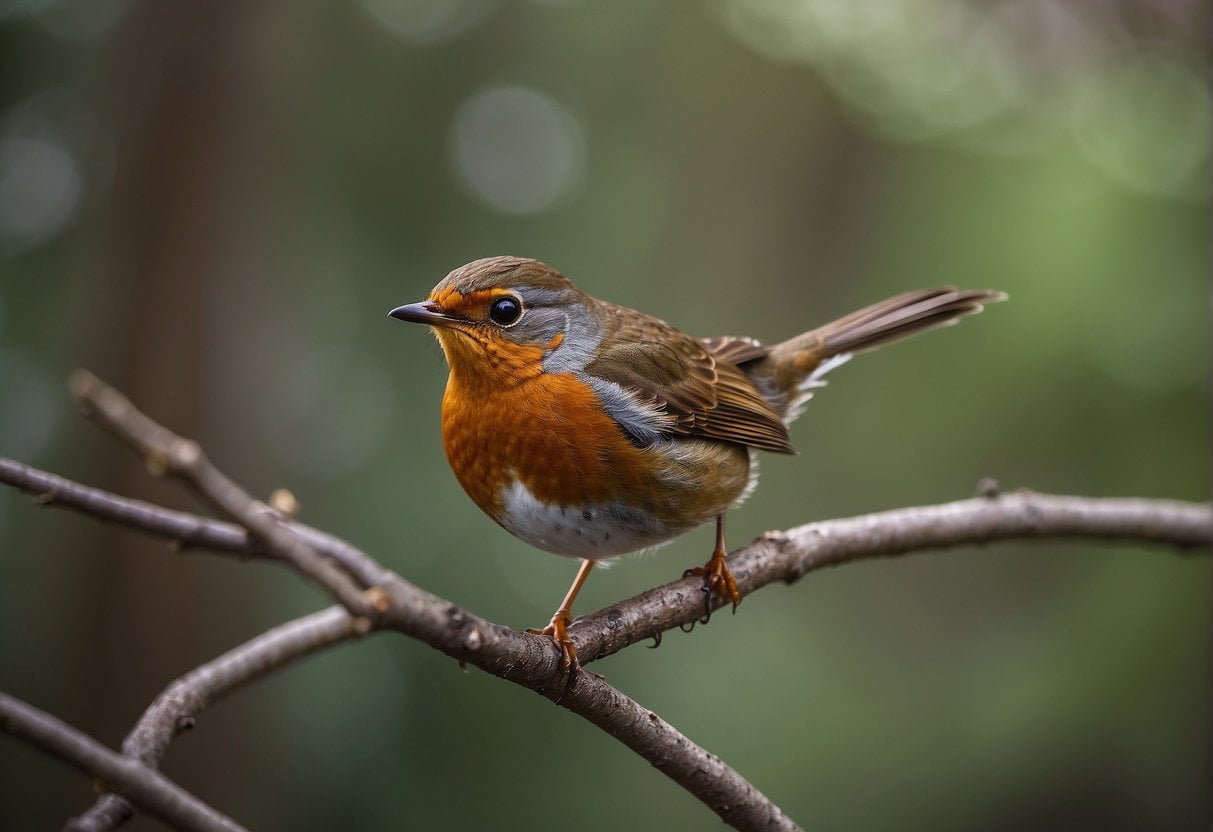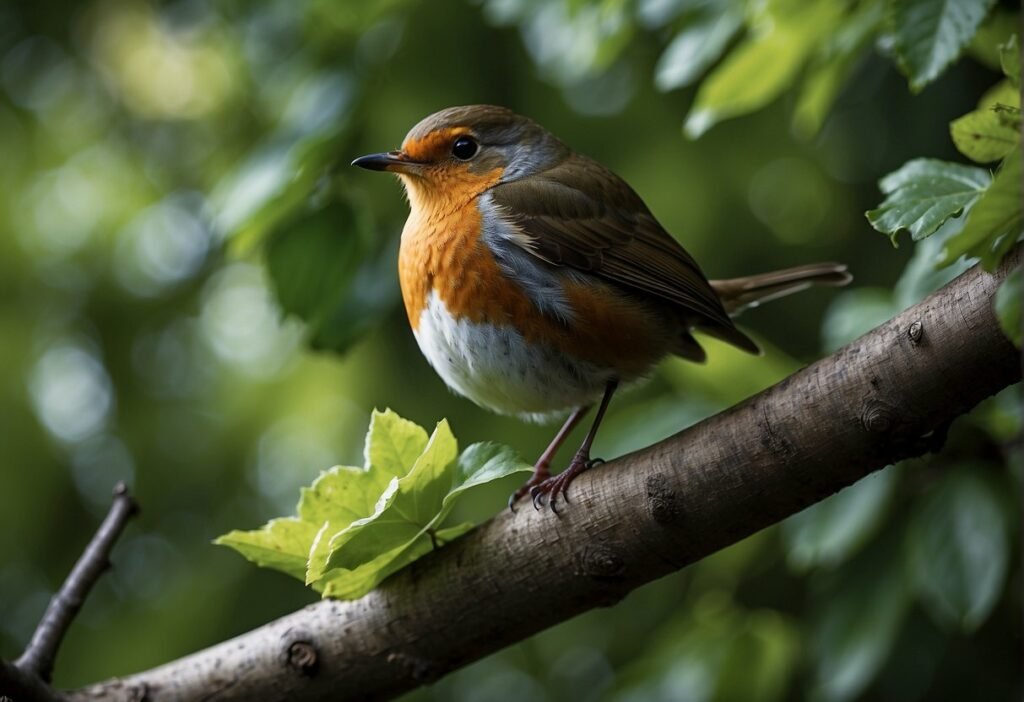The American Robin, scientifically known as Turdus migratorius, is a familiar sight across North America. These birds are known for their orange-red breasts and melodious songs. However, have you ever wondered how fast they can fly? Flight speed is an essential aspect of bird behavior, and understanding the flight speed of a robin can provide valuable insights into their ecology and behavior.

The flight speed of a robin can vary depending on several factors, such as wind conditions, altitude, and flight pattern. Generally, American Robins fly at an average speed of 20-30 miles per hour (mph). However, during migratory flights, they can achieve much higher speeds, reaching up to 40-50 mph. The flight speed of a robin is relatively slow compared to other birds, such as falcons or eagles. Nonetheless, their speed is sufficient for their foraging and migration needs. In this article, we will explore the flight speed of the American Robin in detail and delve into the factors that influence their flight behavior.
Physical Characteristics and Behavior
Morphology and Plumage
The American Robin (Turdus migratorius) is a medium-sized passerine bird with a wingspan of 12-16 inches and an average weight of 2.7 ounces. The male and female robins have similar physical characteristics, with the male being slightly larger than the female. The robin’s plumage is primarily brownish-gray on the back and wings, with a reddish-orange breast and white belly. The robin’s head is black with a white eye-ring, and its beak is yellow.
Flight Mechanics and Speed
Robins are capable of sustained flight at speeds of up to 20-30 miles per hour. They typically fly in a straight line at a moderate speed, but can also make quick, darting movements to avoid obstacles or catch prey. The robin’s flight is powered by its large chest muscles, which provide the necessary lift and propulsion.
Foraging and Diet
Robins are primarily insectivorous, but also eat a variety of fruits and berries, such as juniper berries, holly berries, and crabapples. They are also known to eat earthworms, which they locate by sight and sound. Robins forage for food on the ground, using their sharp eyesight to spot prey and their strong beaks to extract it from the soil or vegetation.
In conclusion, the American Robin is a medium-sized bird with distinctive physical characteristics and behavior. Its flight speed is moderate, but it is capable of quick movements to avoid obstacles or catch prey. The robin’s diet consists primarily of insects and fruits, and it forages for food on the ground using its sharp eyesight and strong beak.
Habitat and Migration Patterns
Breeding and Nesting Habits
Robins are common birds found throughout North America. They are known for their distinctive red breast and melodious songs. They prefer to live in open woodlands, forests, fields, gardens, and even urban areas. Robins build their nests out of mud and moss, and they often build them in the forks of trees or on ledges. They are territorial birds and will defend their nests and broods fiercely.
Robins typically breed from March to July, and they can have up to three broods in a single season. The female robin lays three to five blue eggs, which she incubates for about two weeks. Once the eggs hatch, both parents take turns feeding and caring for the chicks until they fledge, which takes about two weeks.
Seasonal Movements and Migration
Robins are migratory birds, and their movements are closely tied to weather patterns. In the winter, they move to their wintering grounds, which can be as far south as Mexico. In the spring, they return to their breeding grounds in North America. During migration, robins often travel in flocks, which can number in the thousands.
Robins are known for their ability to find their way back to their breeding grounds each year. Scientists believe that they use a combination of magnetic fields, the position of the sun, and landmarks to navigate. Robins are also able to adjust their migration patterns in response to changes in the environment, such as changes in temperature or food availability.
In conclusion, robins are fascinating birds with unique habitat and migration patterns. By understanding their breeding and nesting habits, as well as their seasonal movements and migration, we can gain a better appreciation for these birds and their survival in the wild.
Frequently Asked Questions
What is the average speed of a robin in flight?
The average speed of a robin in flight is around 20-25 miles per hour. However, the speed can vary depending on factors such as wind speed, altitude, and weather conditions.
How does a robin’s flight speed compare to that of the fastest birds?
The robin’s flight speed is relatively slow compared to the fastest birds. For example, the peregrine falcon is the fastest bird in the world and can reach speeds of up to 240 miles per hour during a dive.
At what altitude does a robin typically fly?
Robins are typically found flying at low altitudes, usually below 100 feet. However, they can fly up to 500 feet when migrating.
What is the typical weight of an American robin?
The typical weight of an American robin is around 2-3 ounces, which is roughly the weight of two AA batteries.
Which bird holds the record for the fastest flight speed?
The peregrine falcon holds the record for the fastest flight speed in the world.
How does the flight speed of a swift compare to other fast-flying birds?
The swift is one of the fastest birds in the world and can reach speeds of up to 70 miles per hour in level flight. However, it is still slower than birds like the peregrine falcon and the common swift.




